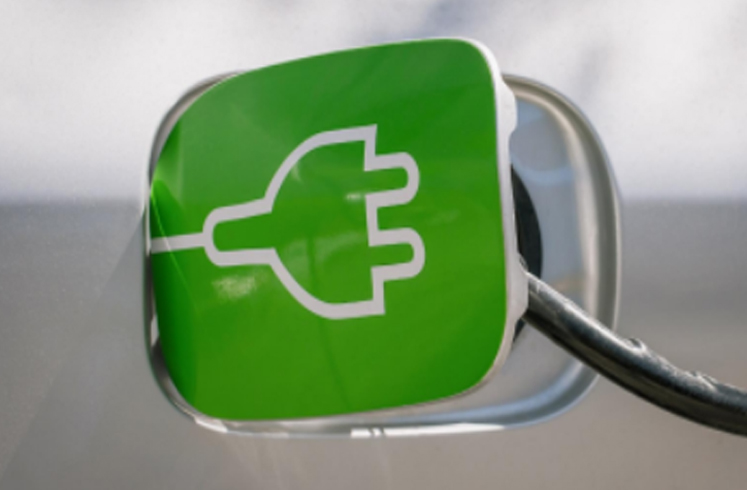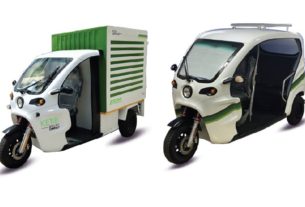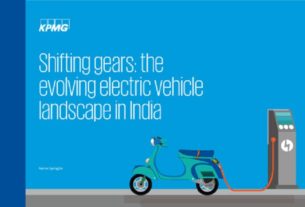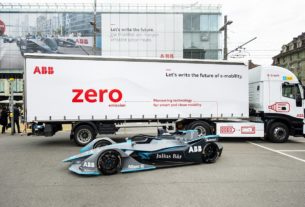Electric vehicles (EVs) present an opportunity of almost Rs 3 lakh crore for various stakeholders in India in the five years through fiscal 2026, a CRISIL analysis indicates.

The opportunity includes potential revenue of about Rs 1.5 lakh crore across vehicle segments for original equipment manufacturers (OEMs) as well as component manufacturers and ~Rs 90,000 crore in the form of disbursements for vehicle financiers, with shared mobility and insurance accounting for the balance.
EV adoption continues to surge, meanwhile, as more people shift from internal combustion engine (ICE) vehicles. Data on the Vahan portal shows the share of electric three-wheelers (3Ws) increased to almost 5% of 3Ws registered in fiscal 2022 from less than 1% in fiscal 2018. For electric two-wheelers (2Ws) and buses, the percentages rose to almost 2% and 4%, respectively.
The shift is not limited to large cities either. Smaller towns are also entering the fray, driven by the government’s fiscal and non-fiscal measures. As per Vahan statistics, the contribution of the top 10 districts in nationwide sales of electric cars and 3Ws dropped from 55-60% in fiscal 2021 to 25-30% in fiscal 2022. For 2Ws, the percentage declined from 40-45% to 15-20%.
The drivers of EV adoption are for all too evident. Rising fuel prices and higher cost of ICE vehicles are impacting their affordability, and government support for EVs is also playing a huge role. Central schemes such as Faster Adoption and Manufacturing of Hybrid and Electric Vehicles in India (FAME-India), Phased Manufacturing Plan, and Production Linked Incentive have jump-started the country’s EV journey. Start-ups with new-age business models as well as OEMs with an established business have evinced interest in manufacturing EVs. Many state governments have also provided demand incentives, and capital assistance for setting up greenfield manufacturing plants.
In addition, CRISIL’s analysis of the total cost of ownership suggests electric 2Ws and 3Ws attained parity with ICE vehicles last fiscal even when running a mere 6,000 km and 20,000 km, respectively, annually. By 2026, the analysis indicates, adoption of 2Ws and 3Ws will rise even sans subsidy, due to parity of ownership cost with ICE vehicles.
Says Hemal Thakkar, Director, CRISIL Limited, “Considering the improving cost parity and the government’s focus on electrification of vehicles, we should not be surprised if EV penetration reaches 15% in 2Ws, 25-30% in 3Ws, and 5% in cars and buses by fiscal 2026 in terms of vehicle sales.”
Several new trends and business models are expected to emerge as all that growth materialises.
Battery-as-a-service and public charging stations, for one, typically has a pay-per-use model and aims to reduce the initial outgo of the customer, improve viability, address range anxiety and, in turn, increase asset utilisation.
Mobility-as-a-service is yet another. It focuses on shared mobility by linking operations with charging infrastructure. Here, too, the vehicle and charging infrastructure are deployed on a pay-per-use model.
Then there is micro-mobility, which provides last-mile distribution of cargo by way of micro-rental of electric 2Ws and 3Ws, operating on a self-drive rental model. The model is typically asset-light and based on open-source operations, where the user can hire and deploy vehicles.
Says Jagannarayan Padmanabhan, Director, CRISIL Limited, “In sum, the emergence of EVs is an opportunity for both existing and new industry participants to innovate and capitalise on the quickly evolving passenger and cargo mobility. To address ecosystem challenges of the EV industry, the government is considering rolling out a structured battery swapping policy. Such facilitations will go a long way in realising the EV potential. In addition, improvement in availability of finance will push EV adoption.”




